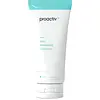What's inside
What's inside
 Key Ingredients
Key Ingredients

 Benefits
Benefits

 Concerns
Concerns

 Ingredients Side-by-side
Ingredients Side-by-side

Water
Skin ConditioningGlycerin
HumectantSalicylic Acid
MaskingCetearyl Alcohol
EmollientNeopentyl Glycol Diheptanoate
EmollientXanthan Gum
EmulsifyingParaffin
PerfumingGlyceryl Stearate
EmollientPEG-100 Stearate
Saxifraga Sarmentosa Extract
Skin ConditioningVitis Vinifera Fruit Extract
Skin ConditioningMorus Alba Bark Extract
Skin ConditioningScutellaria Baicalensis Root Extract
AstringentButylene Glycol
HumectantLinoleic Acid
CleansingLinolenic Acid
CleansingSodium Hyaluronate
HumectantDisodium EDTA
Glycolic Acid
BufferingPolysorbate 20
EmulsifyingSodium Hydroxide
BufferingCetyl Alcohol
EmollientIsododecane
EmollientPhenoxyethanol
PreservativeChlorphenesin
AntimicrobialBenzoic Acid
MaskingSorbic Acid
PreservativeParfum
MaskingWater, Glycerin, Salicylic Acid, Cetearyl Alcohol, Neopentyl Glycol Diheptanoate, Xanthan Gum, Paraffin, Glyceryl Stearate, PEG-100 Stearate, Saxifraga Sarmentosa Extract, Vitis Vinifera Fruit Extract, Morus Alba Bark Extract, Scutellaria Baicalensis Root Extract, Butylene Glycol, Linoleic Acid, Linolenic Acid, Sodium Hyaluronate, Disodium EDTA, Glycolic Acid, Polysorbate 20, Sodium Hydroxide, Cetyl Alcohol, Isododecane, Phenoxyethanol, Chlorphenesin, Benzoic Acid, Sorbic Acid, Parfum
Benzoyl Peroxide 5%
Butylene Glycol
HumectantCitric Acid
BufferingCocamidopropyl Betaine
CleansingDiazolidinyl Urea
PreservativeHydroxyphenyl Propamidobenzoic Acid
Skin ConditioningMethylparaben
PreservativePentylene Glycol
Skin ConditioningPropylparaben
PreservativeWater
Skin ConditioningSodium Citrate
BufferingSodium Cocoyl Isethionate
CleansingSodium Lauroyl Sarcosinate
CleansingXanthan Gum
EmulsifyingIngredients Explained
These ingredients are found in both products.
Ingredients higher up in an ingredient list are typically present in a larger amount.
Butylene Glycol (or BG) is used within cosmetic products for a few different reasons:
Overall, Butylene Glycol is a safe and well-rounded ingredient that works well with other ingredients.
Though this ingredient works well with most skin types, some people with sensitive skin may experience a reaction such as allergic rashes, closed comedones, or itchiness.
Learn more about Butylene GlycolWater. It's the most common cosmetic ingredient of all. You'll usually see it at the top of ingredient lists, meaning that it makes up the largest part of the product.
So why is it so popular? Water most often acts as a solvent - this means that it helps dissolve other ingredients into the formulation.
You'll also recognize water as that liquid we all need to stay alive. If you see this, drink a glass of water. Stay hydrated!
Learn more about WaterXanthan gum is used as a stabilizer and thickener within cosmetic products. It helps give products a sticky, thick feeling - preventing them from being too runny.
On the technical side of things, xanthan gum is a polysaccharide - a combination consisting of multiple sugar molecules bonded together.
Xanthan gum is a pretty common and great ingredient. It is a natural, non-toxic, non-irritating ingredient that is also commonly used in food products.
Learn more about Xanthan Gum